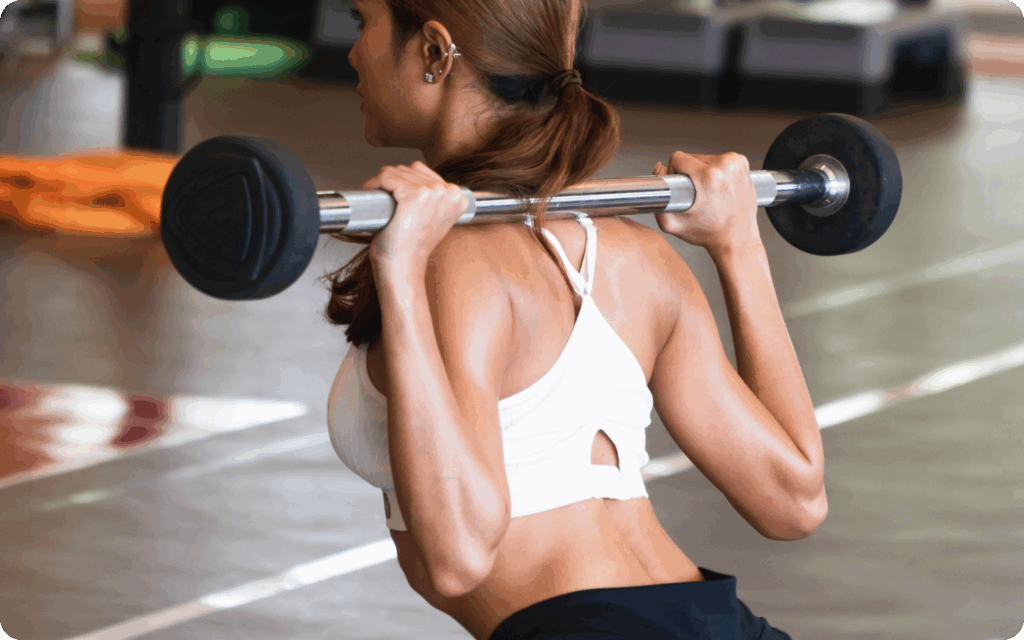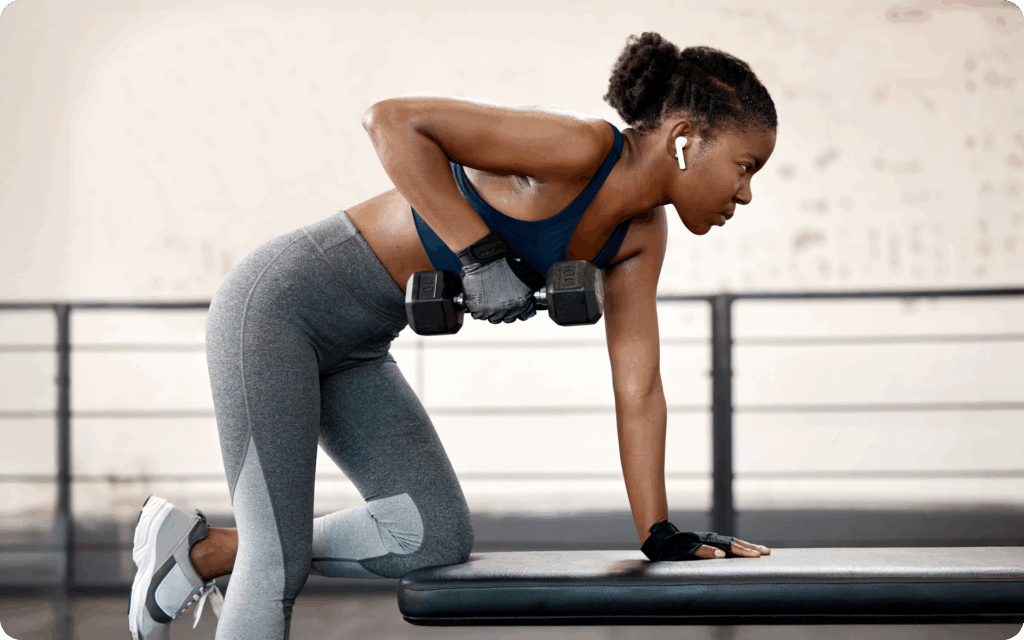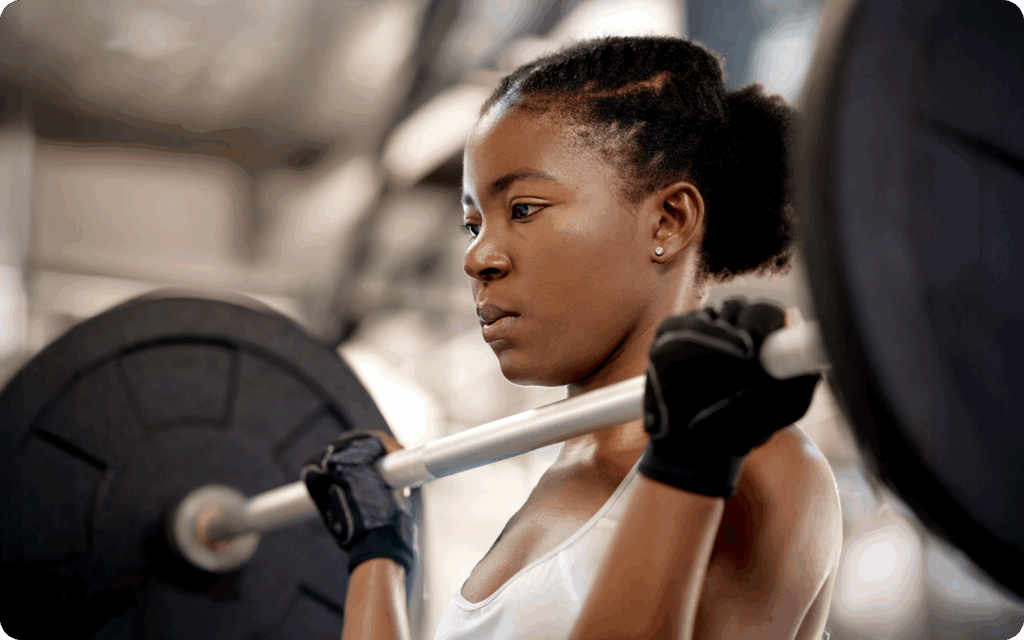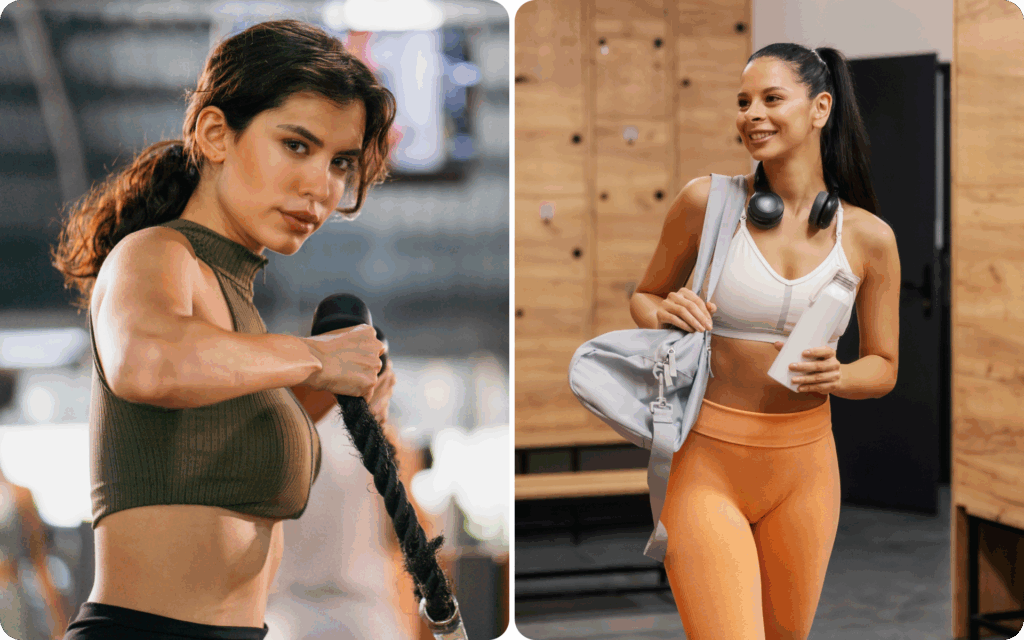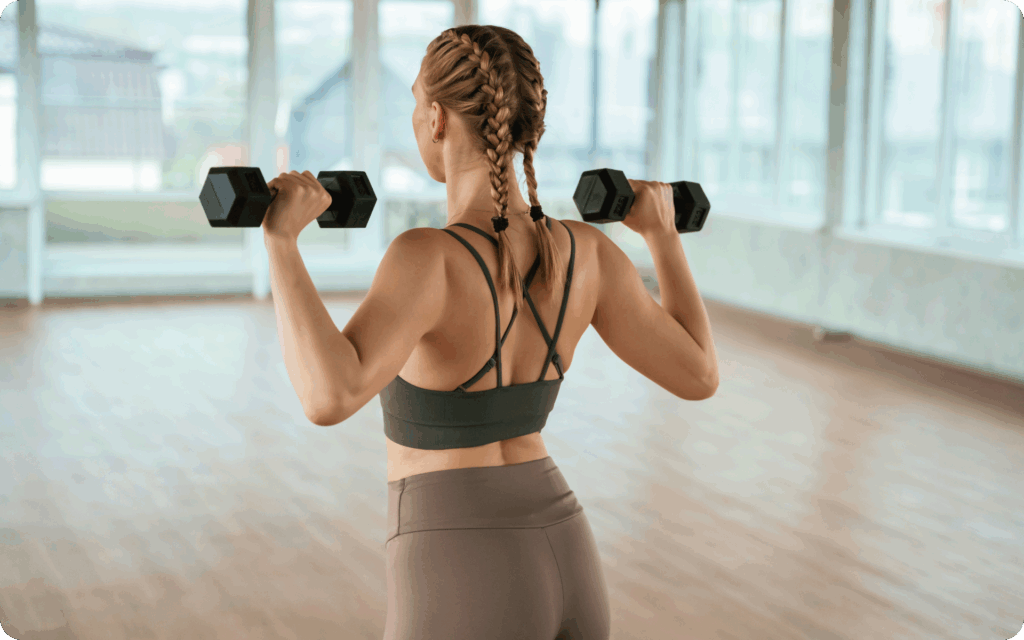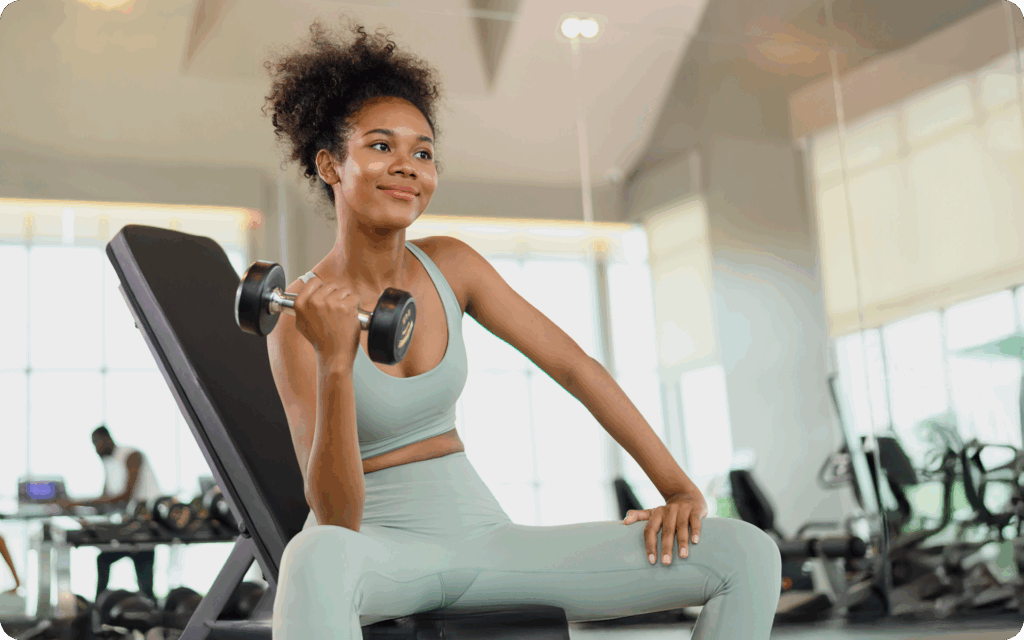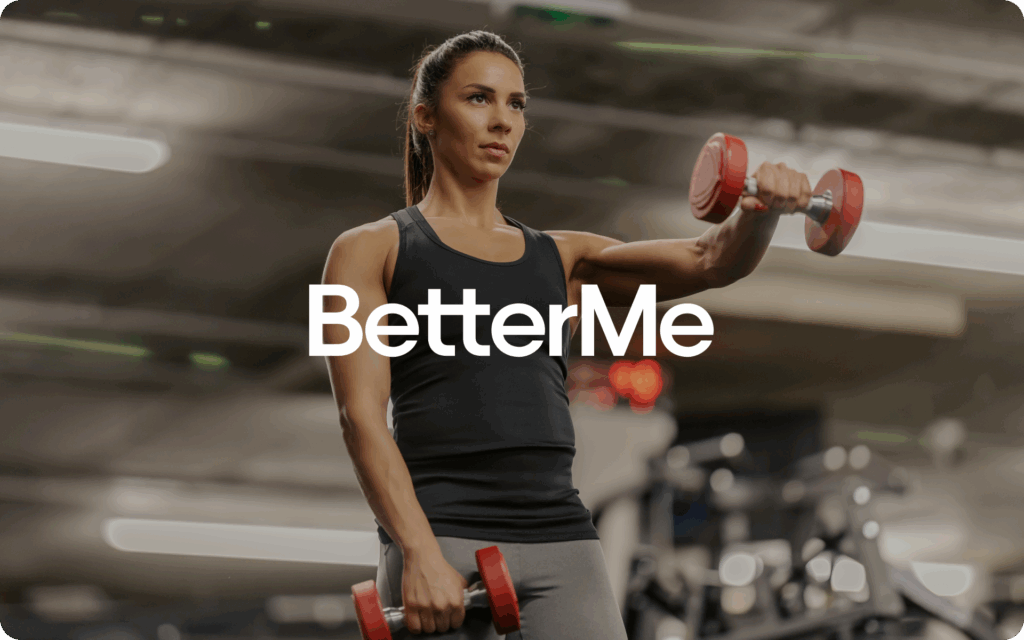Pairing muscle groups in a workout is a classic programming strategy to organize your training week. One of the most effective and time-honored combinations is the chest and back workout.
By training these two large, opposing muscle groups on the same day, you can build a balanced and powerful upper body. But how do you structure it for the best results, especially if you’re just starting?
This guide breaks down the science and provides a complete chest and back workout plan for beginners. We’ll explore how to pair muscles, structure your split, and execute each movement with precision. You’ll learn not just what to do, but why you’re doing it, empowering you to train smarter and achieve your goals faster.
What’s the Best Muscle Group to Pair with the Chest?
When designing a workout program, a common question is which muscles to train together. While there’s no research on a single “best” muscle group to pair with the chest, the most common and effective pairings are back, shoulders, or triceps. Your ideal choice will depend on your training split, frequency, and personal goals.
Chest and Back
This is a classic “antagonist” pairing, muscles that perform opposing actions. The chest muscles (pectorals) are primarily responsible for pushing movements, while the back muscles (latissimus dorsi, rhomboids, trapezius) handle pulling movements.
Training them together on the same day ensures balanced development around the shoulder joint. This can improve posture and joint stability (1).
As the exercises don’t directly interfere with each other, you can maintain a high level of performance for both muscle groups. This makes a chest and back workout same day routine a highly efficient option.
Chest and Shoulders
This is an “agonist” or synergistic pairing, as both muscle groups are involved in pressing movements. The front deltoids (shoulders) are heavily engaged during most chest presses (2).
Training them together allows you to fatigue all pressing muscles in one session. The main drawback is the potential for accumulated fatigue, which may limit the weight you can lift for later exercises in the workout.
Chest and Triceps
Similar to the chest and shoulder pairing, this combination focuses on pushing muscles. The triceps are the primary movers for extending the elbow and are significantly involved in all pressing exercises (3).
Pairing them is logical and efficient. However, your triceps may be fatigued from chest exercises, which could reduce the intensity you can bring to direct triceps work.
For many, particularly those who are looking for balanced muscular development and efficient workouts, pairing chest and back is a superior strategy. It allows each muscle group to be trained when it’s fresh, which leads to better quality sets and a greater potential for growth.
Is It Okay to Train Chest and Back Together?
Yes, it is often highly recommended to train the chest and back together. This pairing offers several distinct advantages that make it a cornerstone of many successful training programs.
Here’s why a chest and back workout same day is so effective:
- Balanced Muscular Development
Your chest muscles are responsible for pushing, while your back muscles handle pulling. Training them in the same session ensures that you give equal attention to both sides of your torso. This balance is essential for maintaining healthy posture and preventing the rounded-shoulders look that can result from over-emphasizing chest training (1).
- Improved Joint Stability
The shoulder is a complex ball-and-socket joint that relies on a balanced network of muscles to operate safely. By strengthening the opposing muscles in the chest and back, you’ll create a more stable and resilient shoulder girdle.
Research on scapulothoracic mechanics – the coordinated movement of the shoulder blade against the ribcage – has highlighted the importance of strong back muscles for proper shoulder function during pressing movements (4).
BetterMe: Health Coaching app helps you achieve your body goals with ease and efficiency by helping to choose proper meal plans and effective workouts. Start using our app and you will see good results in a short time.
- Efficient Time Management
Combining two large muscle groups into a single workout saves you time and reduces the number of days you need to be in the gym every week. This makes it an excellent choice for individuals with busy schedules. You can achieve a high-quality, comprehensive upper-body stimulus in one focused session.
- Enhanced Performance (The “Agonist-Antagonist” Effect)
Some evidence has suggested that training opposing muscle groups back-to-back (a method that is known as supersetting) can lead to a slight, temporary increase in strength (5). While not a magic bullet, it can help you get more out of your workout.
Even without supersetting, you can move from a chest exercise to a back exercise without performance suffering due to residual fatigue in the primary muscles.
For a beginner, pairing chest and back provides a fantastic foundation for learning fundamental movement patterns while building a strong, functional upper body. This approach is a key part of an effective chest and back workout plan for beginners.
What Is the Best Split for a Chest and Back Workout Plan?
Many popular training approaches, such as push/pull/legs (PPL), upper/lower split, and full-body splits, don’t make room for a dedicated chest and back workout plan.
These routines typically separate pushing and pulling muscles or mix all muscle groups in one session, which leaves little opportunity for you to give focused attention to training your chest and back together.
As a result, the benefits of pairing these muscle groups, such as balanced strength across the upper body, improved scapular mechanics, and efficient use of training time, can be overlooked.
If you want to maximize the results from your chest and back workout plan, you need a structure that gives these foundational muscle groups top priority while still covering shoulders, arms, and legs for complete development.
Read more: A Quick Guide To Simple Pilates Posture Exercises For Better Alignment
4-Day Chest and Back Workout Plan
Here’s a practical, easy-to-follow weekly layout that is centered around a chest and back workout plan:
- Day 1: Chest and Back
Start your week with the comprehensive chest and back workout plan outlined in this guide. Giving your largest upper-body muscles priority early in the week ensures they’re trained when you’re freshest. - Day 2: Rest or Active Recovery
Take a full rest day or focus on light activity, such as walking or stretching, to encourage recovery. - Day 3: Legs, Shoulders, and Arms
Train your lower body with exercises such as squats, lunges, and leg curls, then include shoulder presses, lateral raises, and isolation work for biceps and triceps. This day ensures that you cover all the key muscle groups that aren’t emphasized on Day 1. - Day 4: Rest or Active Recovery
Another rest or light activity day to aid recovery and maintain performance. - Day 5: Full Body Workout
Incorporate compound exercises that recruit multiple muscle groups, such as deadlifts, push-ups, rows, and overhead presses. This session reinforces muscle balance, addresses any areas needing extra work, and helps solidify movement patterns across the body. - Days 6 and 7: Rest or Light Activity
Use the weekend for more recovery or optional mobility work, depending on how your body feels.
Why this layout works:
- You prioritize your chest and back workout plan right at the start, which allows for maximal energy and performance.
- Every major muscle group – shoulders, arms, and legs – gets direct training on its own dedicated day.
- Full-body training at the end of the week reinforces balance and gives you a second opportunity to stimulate growth without excessive fatigue.
- Rest days are spaced throughout the week to encourage optimal recovery and consistent progress.
Note that the “best” workout split will depend entirely on how many days per week you can realistically train. Consistency is the most important factor for long-term success.
Are you looking for a higher-intensity challenge? Learn how to incorporate a chest superset workout into your routine.
What Is a Targeted Chest and Back Workout Plan?
A well-designed plan considers more than just the exercises. It also includes details on how to perform them, how much to lift, and how to progress. This chest and back workout plan for beginners is designed to build foundational strength and muscle mass.
Workout Notes:
- Exercise Sequencing: Start with heavier, compound exercises that use more energy (such as barbell presses and rows) and finish with more isolated movements (such as flyes and single-arm rows).
- Sets and Reps: For building muscle (hypertrophy), aim for 3-4 sets per exercise in the 8-12 rep range. This range provides a great blend of mechanical tension and metabolic stress (6).
- Rest Periods: Rest for 90-120 seconds between sets on your big compound exercises and 60-90 seconds on accessory movements. This allows your muscles enough time to recover for the next quality set (7).
- Effort (Reps in Reserve – RIR): RIR refers to how many more reps you could have done with good form. Aim for an RIR of 1-3 on most sets. This means stopping just short of failure, which provides a strong growth stimulus without excessive fatigue (8).
- Weekly Volume: Research has suggested that 10-20 hard sets per muscle group per week is a productive target for growth (9). This workout provides a great start toward that goal.
- Progression: The key to long-term progress is progressive overload. First, aim to add reps to each set (10). Once you can hit the top of the target rep range for all sets (e.g. 12 reps), increase the weight slightly for the next session.
Chest and Back Day (Beginner) Program
- Barbell bench press: 3 sets of 8-10 reps (RIR 2-3)
- Chest-supported T-bar row: 3 sets of 10-12 reps (RIR 1-2)
- Incline dumbbell press: 3 sets of 10-12 reps (RIR 1-2)
- Lat pulldown (neutral grip): 3 sets of 12-15 reps (RIR 1-2)
- Cable fly (low-to-high): 2 sets of 12-20 reps (RIR 0-1)
| Exercise | Sets | Reps | Rest | RIR |
|---|---|---|---|---|
| 1. Barbell bench press | 3 | 8-10 | 120 secs | 2-3 |
| 2. Chest-supported row | 3 | 10-12 | 90 secs | 1-2 |
| 3. Incline dumbbell press | 3 | 10-12 | 90 secs | 1-2 |
| 4. Lat pulldown (neutral grip) | 3 | 12-15 | 90 secs | 1-2 |
| 5. Cable fly (low-to-high) | 2 | 12-20 | 60 secs | 0-1 |
- For a chest and back workout at home:
- Barbell bench press can be substituted with dumbbell bench press or push-ups.
- Chest-supported row and lat pulldown can be substituted with dumbbell rows and banded pull-aparts or pulldowns.
1. Barbell Bench Press
This is a foundational exercise for developing the entire chest, with an emphasis on the large sternal (middle) portion of the pecs.
- Lie on a flat bench with your feet planted firmly on the floor.
- Grip the bar with a medium width, roughly 1.5 times your shoulder width. A 2021 systematic review found this grip width to be highly effective for pectoral activation (11).
- Pull your shoulder blades together and down, creating a stable base to press from.
- Lower the bar to your mid-chest in a controlled manner, keeping your elbows tucked at a 45-60 degree angle relative to your torso.
- Drive the bar back up powerfully to the starting position.
2. Chest-Supported Row
This movement is excellent for developing the mid-back (rhomboids and trapezius). The chest support helps you isolate the back muscles by preventing the use of momentum.
- Set yourself up on a chest-supported row machine with your chest firmly on the pad.
- Initiate the movement by pulling your shoulder blades back first.
- Row the handles toward your torso, squeezing your back muscles hard at the peak of the contraction.
- Lower the weight under control, allowing your shoulder blades to move forward for a full stretch at the bottom.
3. Incline Dumbbell Press
This press variation targets the clavicular (upper) fibers of the chest, which is crucial for building a full, balanced physique.
- Set an adjustable bench to a low incline of 20-30 degrees. Research has shown that this angle range effectively targets the upper pecs without overly engaging the shoulders (2).
- Sit on the bench holding dumbbells on your thighs. Kick them up to your shoulders.
- Press the dumbbells upward and slightly inward over your chest.
- Lower them slowly and deeply to feel a good stretch across your pecs, maintaining control.
4. Lat Pulldown (Neutral Grip)
This is a primary exercise for building back width by targeting the latissimus dorsi (lats). A neutral (palms facing each other) grip is often comfortable on the shoulders and highly effective for lat engagement.7
- Sit at the lat pulldown machine and secure your knees under the pads.
- Grip the handles and lean back just slightly, keeping your chest up.
- Start the pull by depressing your shoulder blades (think “put them in your back pockets”).
- Pull the bar down to your upper chest, focusing on driving your elbows down and back.
- Control the weight on the way up, allowing your lats to fully stretch.
5. Cable Fly (Low-to-High)
This isolation exercise is a great finisher for the upper chest. Cables provide constant tension throughout the entire range of motion.
- Set the pulleys at a low position so your arms are at a 45-degree angle.
- Grab the handles and step forward into a staggered stance.
- With a slight bend in your elbows, bring your hands upward and together in a wide arc until they meet in front of your upper chest.
- Squeeze your pecs at the top, then slowly return to the starting position.
No gym access? You can still build a powerful back. Explore these effective back workouts without weights.
How Often Should I Do Chest and Back Workouts?
Research has suggested that training a muscle group 2-3 times per week leads to improved muscle growth and strength compared to working each muscle only once (12). This frequency allows for repeated stimulation while providing enough recovery time, particularly when total weekly sets are distributed sensibly across sessions.
The 4-day chest and back workout plan is designed to align with these findings for optimal results. To recap, you’ll break down your week as follows:
- Day 1: Chest and back (primary, focused workout)
- Day 2: Legs
- Rest Day
- Day 3: Shoulders and arms
- Rest Day
- Day 4: Full body (includes lighter chest and back work, plus accessories for all major muscle groups)
- Rest Day
This layout ensures that you target your chest and back twice a week – first with a comprehensive, higher-volume session and then revisiting them with lighter, supportive work as part of the full-body day. The rest days interspersed between these sessions are essential for muscle repair, managing fatigue, and optimizing performance.
Reasons why BetterMe is a safe bet: a wide range of calorie-blasting workouts, finger-licking recipes, 24/7 support, challenges that’ll keep you on your best game, and that just scratches the surface! Start using our app and watch the magic happen.
Ideally, you should:
- Aim for 10-16 hard sets per week for both chest and back, split between the two training days.
- Distribute the heavier work on Day 1 and use Day 4 for additional volume, targeting different movement patterns or rep ranges to encourage well-rounded development.
- Place rest or active recovery days after both main chest and back sessions to maximize adaptation and limit excessive fatigue.
- Listen to your body – if you notice signs of prolonged soreness or performance drop-off, prioritize recovery strategies such as stretching, mobility, and sleep.
By following this twice-weekly approach in your chest and back workout plan, you’ll achieve a consistent training stimulus, recover effectively, and set yourself up for steady progress in strength and muscle growth.
Read more: Back Workout Exercises for a Strong and Defined Back
Is It Okay to Train Chest and Back Once a Week?
Yes, it’s perfectly fine to train your chest and back once a week, particularly if you’re a beginner or have a busy schedule. A single, focused session where you perform 10-12 hard sets for each muscle group provides more than enough stimulus for growth (13). This is the foundation for a great chest and back workout plan for beginners.
As you become more advanced, your body will adapt. To continue making progress, you may need more training volume. At that point, training the chest and back more frequently can be beneficial.
For example, an intermediate lifter might switch to an upper/lower split, training chest and back twice a week. Instead of one day with 12 sets, they might do two days with 6-8 sets each. This will allow them to handle heavier weights and recover better between sessions, potentially leading to faster gains.
For many people, a chest and back workout at home can be done with simple equipment such as dumbbells or resistance bands, which makes higher frequency training more accessible.
Dumbbells are a versatile tool for building your back. Discover the best back workouts with dumbbells to add variety to your routine.
Yes, two chest exercises are perfectly fine, particularly for a beginner or those who are doing a full-body workout. A good approach is to include one compound press (such as a flat or incline bench press) and one fly movement (such as a dumbbell or cable fly) to target the muscle fibers from different angles. Most experts advise against training the same large muscle groups every day, as they need time to recover and grow. However, smaller muscles that recover quickly, such as calves, abs, and forearms, can often be trained more frequently, sometimes up to 3-4 times a week or with low intensity daily. Larger muscle groups that are worked with heavy, complex movements tend to take the longest to recover. These include the muscles in the legs (quads, hamstrings, glutes) and back (lats, spinal erectors). A large muscle such as the chest can also require 48-72 hours of recovery, particularly after a heavy pressing day (14). The number of rest days you need depends on your training intensity, volume, sleep, and nutrition. A good starting point for most people is 2-3 rest days per week. This ensures that your body has adequate time for muscle repair and your central nervous system can recover, which will prevent burnout and reduce injury risk (15).Frequently Asked Questions
Are just two chest exercises OK?
What muscles can you train every day?
Which muscles take the longest to recover?
How many rest days do you need a week?
The Bottom Line
Building a strong, balanced upper body doesn’t have to be complicated. Pairing chest and back in the same workout is a time-tested, science-backed method that delivers fantastic results.
By focusing on proper form, progressive overload, and consistent effort, this chest and back workout plan provides a clear path to building foundational strength and muscle. Remember to listen to your body, prioritize recovery, and stay consistent. With this structured approach, you have everything you need to start transforming your physique.
DISCLAIMER:
This article is intended for general informational purposes only and does not serve to address individual circumstances. It is not a substitute for professional advice or help and should not be relied on for making any kind of decision-making. Any action taken as a direct or indirect result of the information in this article is entirely at your own risk and is your sole responsibility.
BetterMe, its content staff, and its medical advisors accept no responsibility for inaccuracies, errors, misstatements, inconsistencies, or omissions and specifically disclaim any liability, loss or risk, personal, professional or otherwise, which may be incurred as a consequence, directly or indirectly, of the use and/or application of any content.
You should always seek the advice of your physician or other qualified health provider with any questions you may have regarding a medical condition or your specific situation. Never disregard professional medical advice or delay seeking it because of BetterMe content. If you suspect or think you may have a medical emergency, call your doctor.
SOURCES:
- Relationship between Upper Limb Functional Assessment and Clinical Tests of Shoulder Mobility and Posture in Individuals Participating in Recreational Strength Training (2024, mdpi.com)
- Effect of Five Bench Inclinations on the Electromyographic Activity of the Pectoralis Major, Anterior Deltoid, and Triceps Brachii during the Bench Press Exercise (2020, mdpi.com)
- The different role of each head of the triceps brachii muscle in elbow extension (2018, pmc.ncbi.nlm.nih.gov)
- A Biomechanical Model of the Scapulothoracic Joint to Accurately Capture Scapular Kinematics during Shoulder Movements (2016, journals.plos.org)
- Superset Versus Traditional Resistance Training Prescriptions: A Systematic Review and Meta-analysis Exploring Acute and Chronic Effects on Mechanical, Metabolic, and Perceptual Variables (2025, pubmed.ncbi.nlm.nih.gov)
- Loading Recommendations for Muscle Strength, Hypertrophy, and Local Endurance: A Re-Examination of the Repetition Continuum (2021, mdpi.com)
- Acute Effect of Fixed vs. Self-Selected Rest Interval Between Sets on Physiological and Performance-Related Responses (2024, mdpi.com)
- Application of the Repetitions in Reserve-Based Rating of Perceived Exertion Scale for Resistance Training (2016, pmc.ncbi.nlm.nih.gov)
- A Systematic Review of The Effects of Different Resistance Training Volumes on Muscle Hypertrophy (2022, pmc.ncbi.nlm.nih.gov)
- Effects of Resistance Training Overload Progression Protocols on Strength and Muscle Mass (2024, pubmed.ncbi.nlm.nih.gov)
- A Biomechanical Analysis of Wide, Medium, and Narrow Grip Width Effects on Kinematics, Horizontal Kinetics, and Muscle Activity on the Sticking Region in Recreationally Trained Males During 1-RM Bench Pressing (2020, frontiersin.org)
- Effects of Resistance Training Frequency on Measures of Muscle Hypertrophy: A Systematic Review and Meta-Analysis (2016, ink.springer.com)
- A Systematic Review of The Effects of Different Resistance Training Volumes on Muscle Hypertrophy (2022, pmc.ncbi.nlm.nih.gov)
- Chest Press Exercises With Different Stability Requirements Result in Similar Muscle Damage Recovery in Resistance-Trained Men (2017, pubmed.ncbi.nlm.nih.gov)
- The Importance of Recovery in Resistance Training Microcycle Construction (2024, pmc.ncbi.nlm.nih.gov)

